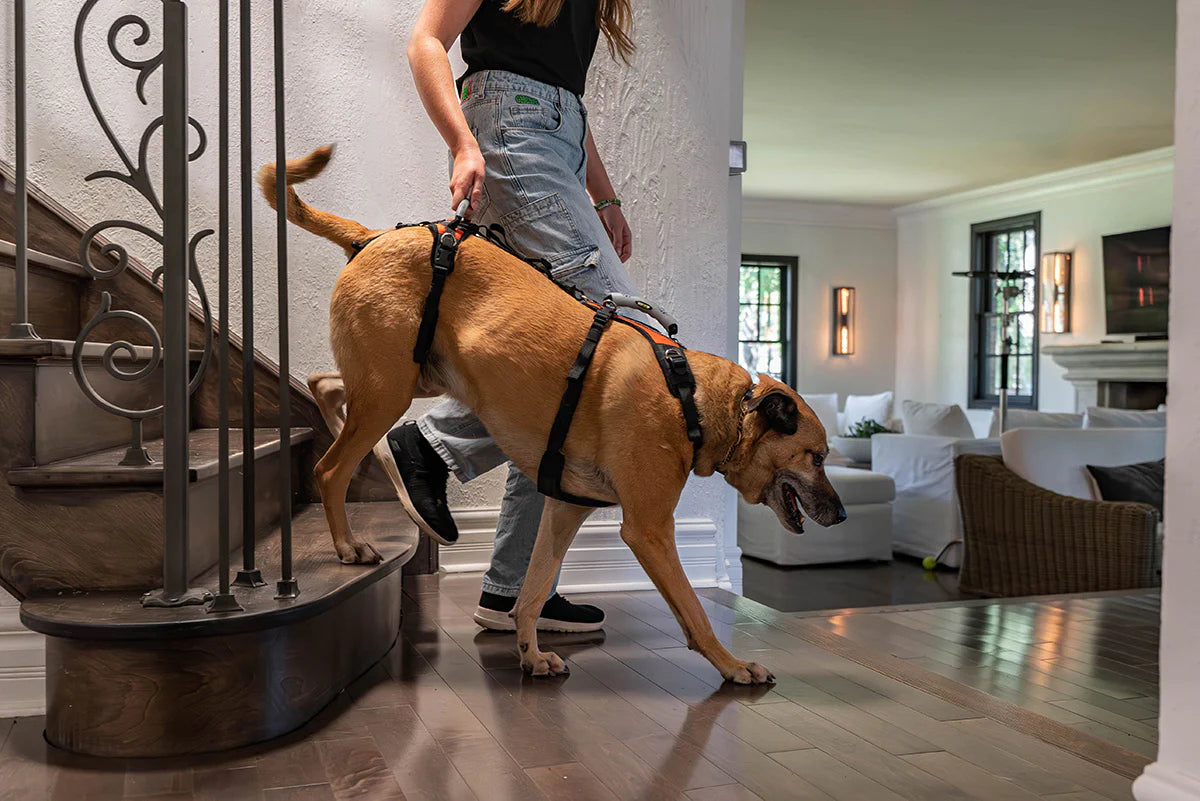When Does A Dog Need A Wheelchair?

Seeing your dog lose partial or complete mobility is not easy for any owner. Whether the condition is due to an injury or permanent paralysis, it’s never fun watching a pet struggle.

Luckily, despite the unfortunate turn of events, your dog still appears to be generally happy. Sure, your dog may have a hard time running or using the stairs. But in general, he or she appears responsive, alert, and, most importantly, motivated to be active.
If you find yourself relating to this situation but are unsure if your dog’s condition is severe enough for a wheelchair, then you have come to the right place!
General Guidance:
- Consult your vet: If you notice your dog is experiencing any signs of mobility issues, don’t wait to talk to the vet. Although some conditions are easily managed, others may lead to chronic problems if they are not addressed in a timely manner.
- At-home evaluations: If you believe that a wheelchair is the best next step, try the “towel test” to see if the dog has enough strength to support itself by its forelimbs.
- Soreness
- General weakness of the limbs
- Accidental injuries
- Surgery recovery
- Spinal problems
- Paralysis
- Arthritis
- Amputations
- Neurological issues
Intervertebral Disc Disease (IVDD)
If your dog has IVDD, a wheelchair could be the best recovery option. IVDD is a common condition, caused by displacement or deterioration of the cushion between spinal discs. Although some dogs are more prone to developing IVDD than others, this uncomfortable and often painful disease can affect all dogs. Depending on the degree of damage, weakness or paralysis of the legs may occur.
Depending on the severity and the stage in which IVDD is discovered, your dog may still maintain full usage of all four legs. In the early stages, a wheelchair would be useful for rehabilitation. If, however, the damage is too severe and your dog becomes paralyzed, the wheelchair would become a tool of your pet's daily needs.
Degenerative Myelopathy (DM)
The onset of DM usually appears in older dogs, ages 8-14. In the simplest terms, DM is caused by loss of connectivity between your dog's brain and its spinal cord. Dogs affected by DM will display symptoms like excessive wobbling and dragging of their feet.
Although there are no known treatments for DM, the wheelchair is perhaps the most appropriate option for this condition because your dog is not experiencing physical pain. Regardless of the extent of your dog’s disability, the wheelchair is guaranteed to improve mobility and the overall well-being of your pet.
Arthritis and Dysplasia
Dogs with arthritis or dysplasia suffer from joint stiffness. Although arthritis occurs primarily due to old age, dysplasia tends to cause similar symptoms in your dog's health. Overall, both conditions make it difficult for your dog to be supported by its own legs, making basic tasks like running or walking painful and nearly impossible.
Your vet may advise supplements (e.g. Glucosamine and Chondroitin Sulfate, Omega Fatty Acids, Vitamin E, Selenium, and MSM), that work to reduce inflammation and create more comfort for your dog. However, the important thing to note about this condition is you still need to find the motivation to keep your dog active. Movement and exercise cause the production of joint fluid, which ultimately aids in lubrication of sore joints. A wheelchair for dogs can helps get your pet moving while strengthening muscles and taking stress off other limbs in the body.
Sudden Paralysis
As seen in the cases of IVDD and DM, paralysis in dogs typically occurs based on genetic predispositions or old age. There are, however, other completely unexpected instances in which your dog may become paralyzed without warning (e.g. complications of the spinal column, tick bite, and bacterial infection).
Although such instances can be incredibly frightening, the good news is that most of these cases are treatable if they are identified early on. In any case, even if your pet’s paralysis is temporary, using a wheelchair will help your dog return to its happy mobile self.
Knee and ACL Problems
Whether your dog tore its knee ligaments or an ACL, the road to a full recovery can be both long and costly. Regardless of your dog’s prior health history, knee/ACL damage can occur at any time. While in some instances surgery may be necessary, in others, all your pet may need is rest.
In this situation, “rest” does not mean a couple of weeks off from strenuous runs and hikes. A dog with a torn knee/ACL may be limited to very basic physical activity (e.g. taking a short walk in the park), for up to several months! Not to mention that if your dog does not receive adequate support during the rest period, he/she can also tear the adjacent knee. In any case, if approved by your vet, a wheelchair can support your dog’s recovery by ensuring that he/she is not overcompensating for the injured leg.
No matter the size, age, or the needs of your dog, if he or she has any of the discussed symptoms or conditions, you should always start with contacting your vet. Remember, that above all else, your dog’s health is in your hands. Be sure to take full precautions by medical advice from a licensed professional and continuing with the prescribed treatment even if you see a drastic improvement in your dog’s mobility. After all, we all want your dog to receive proper care needed and be on his/her way to an improved well-being!
Key takeaways:
- Exercise is a huge contributor to your pet's well-being.
- Getting your dog mobile again will ultimately prolong his/her life.
- Wheelchairs are handy for both long and short-term conditions.








